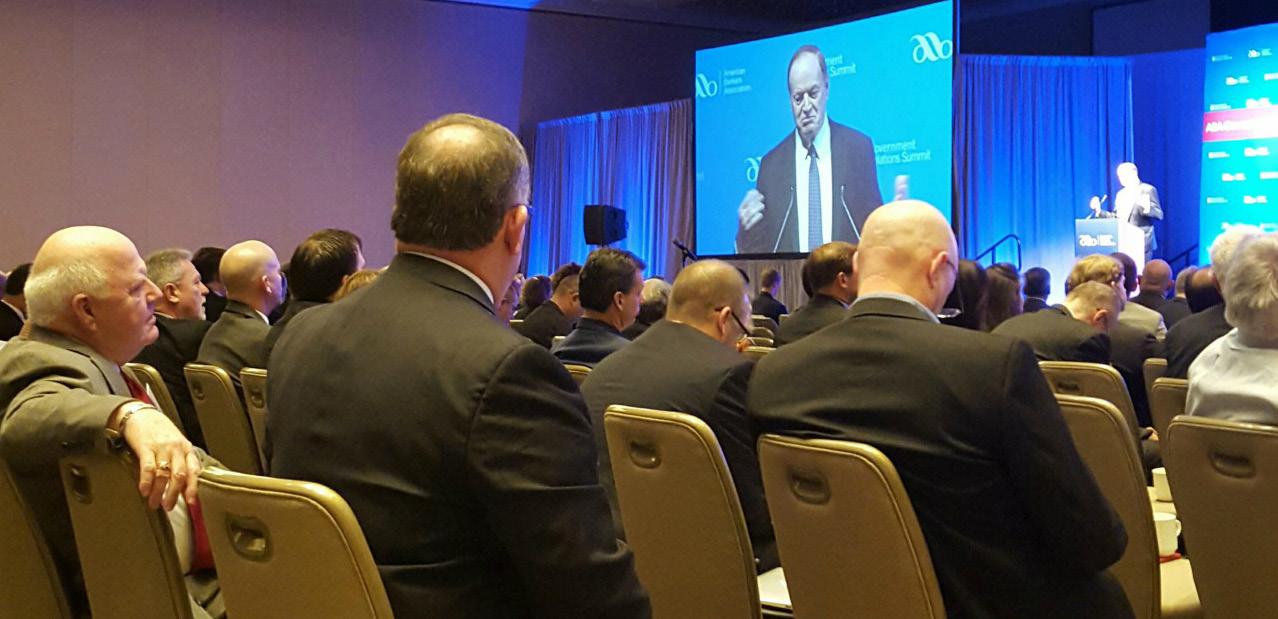MEMBER NEWS
Simmons Bank Converts to Arkansas State-Charter Effective upon the opening of business on April 1, Simmons First National Bank, the subsidiary of Simmons First National Corp., has converted from a national banking association to an Arkansas state-chartered bank. The bank’s name will change to Simmons Bank. Simmons Bank is a member bank of the Federal Reserve System through the Federal Reserve Bank of St. Louis. The conversion isn’t expected to affect the bank’s customers in any way. Customers will receive the same protection on deposits in Simmons Bank as they received with deposits in Simmons First National Bank. “The charter conversion is a strategic undertaking that we believe will enhance our operations in the long term,” said Marty Casteel, chairman and chief executive officer of Simmons Bank. “We’re strongly committed to operating our organization with a focus on community banking. We believe it will be advantageous for our shareholders, customers and associates to work with regulators who are accustomed to community banks and the challenges they face.”
ARKANSAS BANK DEPARTMENT
APPLICATIONS & APPROVALS
Branch Bank Application An application filed by the Merchants & Farmers Bank, Dumas, Desha County, Arkansas, to establish a branch banking facility at a temporary address of 4500 Highway 5 North, Suite 6, Bryant, Saline County, Arkansas, with the permanent address at 3512 Highway 5 North, Bryant, Saline County, Arkansas, has been approved. March 7, 2016. Charter Conversion Application An application filed by Simmons First National Bank, Pine Bluff, Arkansas, a national bank, for conversion to a state-chartered bank to be known as Simmons Bank, Pine Bluff, Arkansas, has been approved. March 31, 2016.
Mortgage Programs Get Creative to Promote American Dream While today’s real estate market continues to be driven by historically low interest rates, some consumers can take advantage of programs that make buying a new home an even more realizable dream. Rural Development and Section 184 Indian Home Loans, as well as the HomeReady® program, are a few examples of vehicles for acquiring a mortgage that have more relaxed requirements than conventional loans. In some cases, this means consumers can benefit from less strict guidelines in terms of income, down payment, and other upfront costs. A Rural Development Loan, for example, offers benefits like no down payment and reduced mortgage insurance for residents in states like Arkansas. The loans, backed by the U.S. Department of Agriculture, are designed to promote expansion into rural communities. Many of these rural communities, however, are located just beyond city limits and surprisingly close to suburban areas. “Many homebuyers are unaware of programs like the Rural Development Loans and are very surprised when they see some of the geographic areas where these loans are available,” said Eric Cullum, Mortgage Loan Manager for Arvest Bank. “We encourage borrowers to explore all of their loan options before they start house-hunting. If they realize they can potentially save money by getting a zero down payment loan with reduced mortgage insurance rates in an attractive area, it can expand their options.” Fannie Mae’s new HomeReady program, meanwhile, boasts a unique structure for consumers. In addition to down payments as low as three percent and reduced mortgage insurance, HomeReady also offers a new feature that allows income to be considered from non-borrower household members, as well as non-occupant
borrowers who are extended family members. “HomeReady provides a lower-cost option for low-to-moderate income families, including those who may have multiple earners in one household,” said Cullum. “It offers an opportunity for these families to get more for their money.” The Section 184 Indian Home Loan Guarantee Program is backed by the U.S. Department of Housing and Urban Development and is another alternative for those who can prove Native American heritage. The program is designed specifically for Native Americans, Alaskan Villages, Tribes or Tribal entities who live on or off native lands. It offers up to 97.75 percent financing and is applicable to home purchases, new construction and refinancing. All of these programs are lesser-known options than VA and FHA loans, which also provide more lenient standards than conventional mortgages. VA loans, backed by the U.S. Department of Veterans Affairs, provide 100 percent financing for veterans, require no down payment, and offer a fixed interest rate and no monthly mortgage insurance, which is a significant savings for consumers. FHA loans, backed by the U.S. Federal Housing Administration, benefit lowerincome families because they require a lower down payment, offer lower interest rates and accept lower credit scores than traditional programs. All of these programs can help some consumers realize homeownership easier than via the conventional process. “Generally speaking, with any type of loan product, the home affordability index, which is based on interest rates, pricing and associated factors in home buying,” said Cullum, “is the best it has been in probably 30 years.” April 2016 | The Arkansas Banker
27










